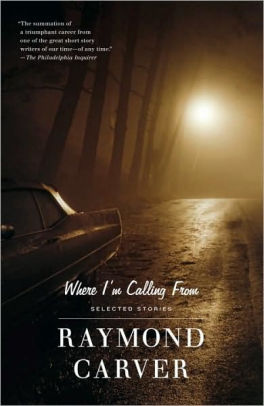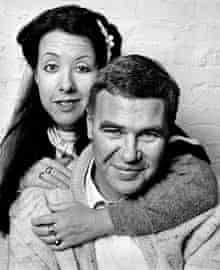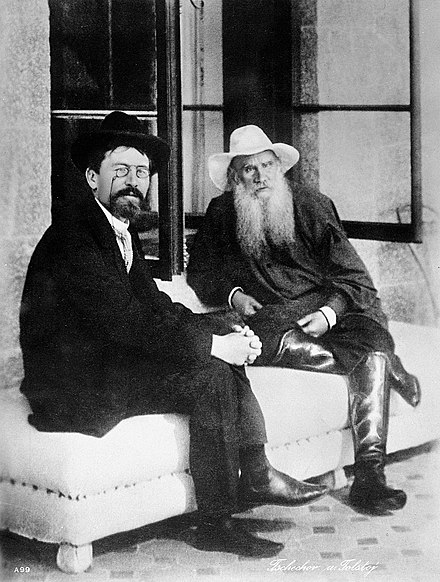- Errand Raymond Carver
- Raymond Carver Errand Pdf Free Trial
- Raymond Carver Pdf
- Raymond Carver Errand Pdf Free Pdf
- Raymond Carver Errand Summary
- Raymond Carver Errand Pdf Free Online
Worksheet: Raymond Carver, “Errand”
Read:

Raymond Carver, “Errand” (attached)
Raymond Carver Errand Pdf Free. Repair corrupted Phison PS2251-07 or PS2307 or UP307 Chip controllers.Download Phison PS2251-07 USB recovery tools fro free now. Popular Mechanics Electronic Assignment. Raymond Carver's 'Popular Mechanics' is a Post-Modern story that is also categorized as Dirty Realism. This story gives readers a glimpse into the life of a contemporary couple; It is a vision that is once disheartening and, perhaps, disturbingly realistic. 'Popular Mechanics' can be read as exhibiting the Post-Modern attribute of hopelessness.
Answer the following questions:
Character Names:
One note about Russian names. People who have significant positions or wealth have several names they are called, depending on the closeness of the relationship. There is a similar but less prominent practice in the US. For example, my spouse, family, and childhood friends call me D D or D (a nickname). My colleagues and adult friends call me Denise. My students usually call me Ms. R or Prof. R (though sometimes they call me Ms. D which is an odd mix of formality and familiarity). People who do not know me call me Ms. D R. This practice can complicate a reading as the names of the characters will change depending on who is speaking. For this story it’s not overly complicated, but I’ve provided a short list of characters with multiple names.
This Study Guide consists of approximately 36 pages of chapter summaries, quotes, character analysis, themes, and more - everything you need to sharpen your knowledge of Errand. Gallagher, Tess, and Bob Adelman, Carver Country: The World of Raymond Carver, Charles Scribner's Sons, 1990. Raymond carver errand pdf Masterguard ups software updates 5 meter air rifle target pdf application. Through our enemies eyes michael scheuer pdf free software. Carver's high school sweetheart and first wife, Maryann Burk Carver, wrote a memoir of her years with Carver, What it Used to be Like: A Portrait of My Marriage to Raymond Carver (2006). Complete summary of Raymond Carver's Errand. ENotes plot summaries cover all the significant action of Errand. By Raymond Carver. The New Yorker, June 1, 1987 P.
- Anton Checkhov, Anton Pavlovich, Chekhov
- Leo Tolstoy, Lev Nikolayevich
Multiple Narratives:
This is an intriguing piece. It could be argued that it is actually two narratives wrapped in another loose narrative. The first narrative is the illness and death of Anton Chekhov, and the second is the narrative of the unnamed hotel valet. The first narrative is a creative non-fiction piece that relies on the diaries and biographical entries of the events surrounding Chekhov’s illness and death. The second narrative is fiction as there is no account of the event–who would worry about the thoughts and actions of a hotel valet? The two contrast nicely as we view death from two perspectives: those who are close to the deceased and the others.
For this reason, we will analyze the story twice. The analysis of most of the first half of the work is provided to you, but you will fill in the gaps and finish the second.
Analysis One
Protagonist:
Anton Chekhov is the protagonist for the first narrative.
We could also identify Dr. Schwohrer as the protagonist for the first half, but it would be a different theme.
Opening / Exposition:
The inciting incident happens at the beginning of the story.

Inciting Incident:
While at an exquisite restaurant, Chekov hemorrhages and is taken home. His condition worsens, so he visits a health spa. Chekov repeatedly denies the truth of his health. He must face his illness and his death.
Mid-point:
Dr Schwohrer visits him during the final moments. The doctor states he will have oxygen brought to the room. Chekov finally admits his condition by saying, “What’s the use? Before it arrives, I’ll be a corpse.”
Climax:
Dr Schwohrer orders champagne. Chekhov, though in a lot of pain and having a hard time breathing, says, “It’s been so long since I’ve had champagne.” He drinks, then stops breathing, and dies.
Coda:
The second narrative begins.
Theme:
We must face the fact that we will die and make peace with it.
Truth Value:
1. Does the theme represent a truth in life (or not)? Explain your answer.

——————–
Errand Raymond Carver
Analysis Two
Protagonist:
2. Make an argument that the hotel valet is a protagonist in the story.
Opening / Exposition:
He first arrives bringing the champagne. He has recently awakened from sleep and his appearance is unkempt. We can also interpret the first narrative as the opening.
Inciting Incident:
He arrives in the morning, bearing a vase with flowers. He is unaware of Chekhov’s death. Olga is still grieving, so she ignores him for few minutes. He inspects the room and notices the cork resting near his foot. He feels compelled to pick up the cork, but does not want to intrude or bring attention to himself.
Mid-point:
The mid-point is actually pretty elaborate. After a few moments, Olga comes to and gives the valet an errand. She asks him to go fetch the mortician. While she is giving him explicit directions, he imagines how he will successfully complete the errand. His imaginings and her directions intermingle as we get glimpes of the future events. While she is telling him of the errand, he grows pale and this could be a reflection of him realizing what has happened, yet this doesn’t ease the conflict.
Climax:
After Olga stops talking, the valet reaches down without looking and picks up the cork.
Plot and Structure:
- How does Essential Literary Termsdefine a Frame Story (if you have started reading Frankenstein, you will want to note the “frame” of that story)? Make an argument that this story by Carver is a kind of frame story. What aspects of it comprise the “frame”? What is the central story?
Theme:
4. What is the theme?
Truth Value:
5. Does the theme represent a truth in life (or not)? Explain your answer.

Further inquiries:
6. How do the two narratives work together? What do they do together that one story alone doesn’t do?
7. What is the author saying about death?
8. Was the doctor correct in ordering the champagne?
9. Should the doctor have refused to take him on as a patient?
10. Why does Olga ask the valet to run the errand instead of waiting for Dr Schwohrer to return?
All papers are written by ENL (US, UK, AUSTRALIA) writers with vast experience in the field. We perform a quality assessment on all orders before submitting them.
Do you have an urgent order? We have more than enough writers who will ensure that your order is delivered on time.

We provide plagiarism reports for all our custom written papers. All papers are written from scratch.
Raymond Carver Errand Pdf Free Trial
Contact us anytime, any day, via any means if you need any help. You can use the Live Chat, email, or our provided phone number anytime.
We will not disclose the nature of our services or any information you provide to a third party.
Get your money back if your paper is not delivered on time or if your instructions are not followed.
Worksheet: Raymond Carver, “Errand” Read: Raymond Carver, “Errand” (attached) Answer the following questions: Character Names: One note about Russian names. People who have significant positions or wealth have several names they are called, depending on the closeness of the relationship. There is a similar but less prominent practice in.
Raymond Carver Pdf
Errand by Raymond Carver Another version of this note and thoughts on other books are available at: - This is like nothing else written by Raymond carver. And he is saying that himself. While the past few previous accounts dealt with domestic issues, misunderstandings and divorce, this is aboutChekhov. Anton Chekhov and his last days. He is invited for an evening out, in a restaurant. And when the two friends are about to begin, the wondrous writer is starting to spill out blood and is taken ill. He is apologizing for “the scandal” And we learn that he is such a wonderful, modest and likeable man - Well, he used to be because his condition is very serious - He is diagnosed with TB and tuberculosis is deadly at that time Among those who come to see him we have Tolstoy, the most famous man in Russia and one who likes Chekhov.
The man, not his works. Leo Tolstoy says that the plays of Chekhov are: - “Static, they keep moving from the kitchen and back” But Anton Chekhov is such a humble, modest manlike a girl. He is married to an actress who is about ten years younger. Chekhov was more interested in courtship and flirting than marriage, but after three years he married this excellent professional. The writer has to be treated urgently and he moves abroad.
Christina Aguilera) 04 - Back In Time 05 - Hope We Meet Again (feat. Pitbull. TJR) 03 - Feel This Moment (feat.
He is so famous that the doctor knows about him and his works, but alas he can’t do anything about the writer’s condition. It is too late.
And Anton Chekhov, who is trained as a doctor himself knows it. In the final stage, the doctor orders expensive champagne- Moet. And there is a character that is invented by Raymond Carver and is told by the wife to bring the best mortician.
Raymond Carver Errand Pdf Free Pdf
At the end of the short story there is an assessment, an account by Raymond Carver in which he explains the Errand. It is meant to be an homage to Chekhov. Anton Chekhov has had a great impact on the American writer. And he has read a biography of Chekhov. In order to create this tale that has been included on the best American Short Stories list, he has had to come up with the good approach.
Raymond Carver Errand Summary
And he obviously did.
“Errand” is an altogether surprising short story among the works of Raymond Carver. The usual characters and themes are not to be found, nor are the settings, nor even is the so-called minimalist narrative mode or style. The story initially presents itself as a conventional biographical narrative (covering the illness and death of Chekhov), but it is soon transformed by excisions, extensions, and expansions. The writer’s work on the implicit hypotext fictionalizes the biographical facts, to which he adds imaginary episodes. These episodes become increasingly detailed, and the last part of the story (there are four parts) has no connection at all with what seemed to be the subject and its treatment at the beginning. Chekhov is dead, and the scene the following day that brings together Olga Knipper and the young bellboy, whom she requests to go fetch a mortician, constitutes an unlikely development.
Raymond Carver Errand Pdf Free Online
The episode is a temporal “bubble” that soon turns spatial when Olga becomes the narrator and develops her own story within the story. She moves her protagonist, a young bellboy, through time, from the prospective conditional (“would”), to the narrative past, and finally to the present. She also moves him in space, from the hotel bedroom to the street and thence to the mortician’s house. By shifting from hypotext to hypertext, from one narrative level to the other, from the imaginary story to the illusion of reality, Carver for the first time in his career experiments with the richness and complexity of narrative performance and inscribes into his text the fragile boundaries that separate the real from the imaginary. In this way, he prompts readers to interrogate the very realism that critics have called the main attribute (or major defect) of his work.
